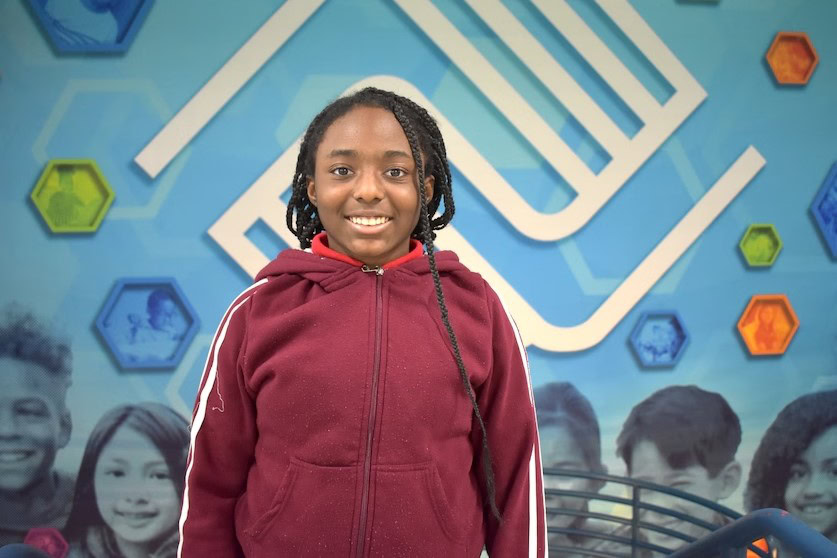Camarria Williams, a Chicago middle schooler, has uncovered a cancer-fighting compound in goose poop.
The droppings that the 13-year-old collected contained a novel compound that scientists at the University of Illinois Chicago found to be toxic to human skin and ovarian cancer cells.
STEM Program For Underserved Communities
Williams made the discovery while attending the Chicago Antibiotic Discovery Lab—a 14-week STEM outreach program at the Boys and Girls Club in partnership with the University of Illinois Chicago. In a class assignment, she learned how to isolate bacteria and program a robot to catalog and track antimicrobial activity.
She was drawn to the program for its unique hands-on experiences for local STEM students. “We walked around and they had these chemicals, and they were working on something. It was just fun,” she told the Chicago Tribune. “I just want to go out and find stuff and see what it can do.”
Dr Brian Murphy, a pharmaceutical sciences researcher at the University of Illinois Chicago, runs the program to inspire the new generation of scientists. The goal is to give underserved middle and high school students experiences in biomedical sciences.
“The premise of our 14-week program is to teach students how many medicines — in this case, antibiotics — are discovered,” said Murphy. “The students analyze their own data and then make decisions in the very initial stages of this drug discovery process.”
Related Post: Teen Named TIME’s 2024 Kid of the Year for Cancer Soap
During the pandemic, Dr Murphy’s lab teamed up with the university’s Institute for Tuberculosis Research to purchase a $200,000 robot that could be programmed to pick up certain bacteria and transfer them to new examination plates for testing against pathogens.
After the STEM research program, students were taught to use the robot’s findings to analyze and understand information gleaned from their biological research to determine which ones had useful antibiotic properties.
Williams was first attracted to the program’s rare hands-on opportunities for local STEM students. She told the Chicago Tribune, “We walked around and they had these chemicals and were working on something. It was just fun. I just want to go out and find stuff and see what it can do.”
A Groundbreaking Discovery From An Unlikely Source
After the program, students were expected to collect samples for analysis. While other students collected samples such as lake water, leaves, bugs, dirt, and flowers, she chose to study goose droppings near a pond in Chicago.
After close study, Williams learned that her sample contained a bacterium, Pseudomonas idahoensis, capable of inhibiting the growth of certain pathogenic bacteria.
Jin Yi Tan, a fourth-year doctoral student in Dr Murphy’s lab, noted, “For Camarria, she prioritized the bacteria with antibiotic properties. So I followed up on the strains that she prioritized, which is where in the lab I would grow it up and purify the compounds and then do some further testing. And that’s where we found this new compound that had some cytotoxic activity against cancer cell lines.”
Camarria was delighted to learn her sample was even more promising than she initially thought. “My mom, auntie, and grandma have all had cancer, so it makes me happy that something I found could help,” she said. “It makes me want to discover more things out there.”
Related Post: British-Canadian OXcan Secures $11 Million For Lung Cancer Detector
The findings were published in the American Chemical Society’s Omega Journal in October, and Camarria was named as a co-author. “Now people will know me,” she said. “They’ll know that I am a smart kid, and I’m curious.”
What Does The Future Hold For Williams Camarria And Her Compound
Although the discovery is exciting, Murphy said, it’s unlikely to become a drug. “Very, very few natural compounds that are discovered ever make it into the clinic as drugs,” he noted.
Still, “compounds like this allow us to understand how cancer works a little better, and that allows other groups of scientists to develop better drugs,” He explained, adding that he and other researchers may continue studying Camarria’s novel compound.
However, Murphy said the finding highlights the importance of accessible STEM programs for young people. “What we’re really trying to do is show young students that there are a lot of real-world applications of science,” he said.
Related Post: Celebs turn out to support Pink in December to uplift breast cancer survivors
“We want to light a spark inside of them, get them to care about their education, and maybe even be the launching point for the next generation of biomedical researchers.”
Camarria is already looking forward to a future career in STEM. “I want to be a scientist,” she said.

